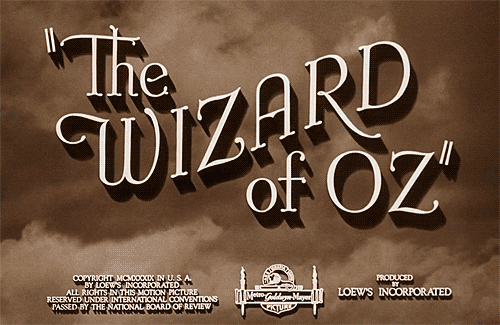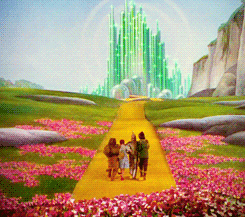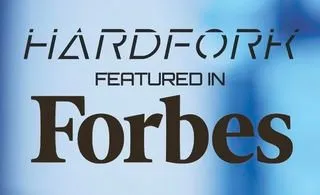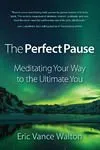
I still remember the first time I watched The Wizard of Oz. I was seven or eight years old and, honestly, I remember being quite unimpressed. I was only mildly entertained by the antics of Dorothy, The Cowardly Lion, The Tin Man, and the Scarecrow. The Wicked Witch of the West and those freaky flying monkeys gave me nightmares for weeks.
This story became much more interesting to me as I got older and began to dig deeper. There are no shortage of theories about the underlying message that author L. Frank Baum was trying to convey when he published the original book in 1900.
One of those theories was published in an article (1964) by Henry Littlefield and was expanded by Hugh Rockoff in his book, "The 'Wizard of Oz' as a Monetary Allegory" (1990). Both authors said L. Frank Baum’s book, and subsequent film, was an allegory for the monetary policy and political system of the late nineteenth-century. Although this theory has been challenged, the parallels are convincing.
Fact: In the original book Dorothy wore silver slippers, not ruby ones as portrayed in the film.
Baum was a member of the Populist movement of the day, who didn’t believe in the gold standard, which guaranteed the government would redeem any amount of paper money for its value in gold. The movement believed, that although the gold standard was good for the rich, it caused a cycle of hardship for most citizens since gold prices and currency values dropped every time miners found substantial new gold deposits. The Populists believed that the nation’s currency should also be backed by silver, which was more abundant, so the value of the currency would remain more stable.
Hugh Rockoff suggested in 1990 that the novel detailed the demonetization of silver in 1873. Rockoff claimed the cyclone that carried Dorothy to the Land of Oz represented the economic and political upheaval, the yellow brick road stood for the gold standard, and the silver shoes Dorothy inherited from the Wicked Witch of the East represented the pro-silver movement.
“No thief, however skillful, can rob one of knowledge, and that is why knowledge is the best and safest treasure to acquire.” ― L. Frank Baum
Moreover, the Emerald City is ruled by the Wizard, a heartless politician, who uses publicity and tricks to convince people he’s benevolent and powerful but really nothing but a selfish and evil mortal. The Wizard sends Dorothy into danger hoping she will rid him of his arch enemy, the Wicked Witch of the West. The Wizard pits people against one another, like chess pieces, to accomplish his own agenda. This sounds all to familiar, doesn’t it?
Additional points to ponder:
- The City of Oz is named after the abbreviation for unit of measure that is commonly used for silver and gold (ounces “oz”);
- Dorothy represents the average citizen who “trying to find a way back home”;
- The road of gold leads to the Emerald City, which is thought to represent the fraudulent world of paper currency (greenbacks) which pretends to have value;
- The Scarecrow represents Midwestern U.S. farmers, that had endured much hardship due to instability of the financial markets in the late 1800's;
- The Tin Man represents the nation’s industrial workforce which had been hit hard by the Depression of 1890; and
- The Cowardly Lion is said to represent politician Williams Jennings Bryan, a Nebraska congressman and a huge proponent of the free-silver movement.
Homework
After having learned all of this I'm going to go back and watch this film again with new eyes and see if there are any other correlations I notice. I challenge you to do the same.
I see so many similarities between the fragile financial conditions of the late 1800's and the "Everything Bubble" of today's fiat-based economic system. The only difference is now we have a the false appearance of a stabile economy in the U.S. due to the abundance of consumer credit and the Treasury Department's ability to print as much new money as they deem necessary. The truth is today's economy is a huge house of cards that could come crashing down at any moment.
The world is waking up to the fact that there alternatives, now over 1,500 of them, in fact. Cryptocurrencies have built in scarcity, most are decentralized, offer transparent transactions, and security for users. I think the best way to guarantee your future freedom and prosperity is to educate yourself as much as you can about these alternatives now.

Is this political and monetary allegory theory true? Your guess is as good as mine. Judging by the .gif above maybe L. Frank Baum was a great visionary who foresaw a day when distributed ledger technology transformed the world? The Emerald City looks an awful lot like it's constructed of green candlesticks! Goodbye for now, I think I'll join Dorothy, the Cowardly Lion, Tin Man, and the Scarecrow and skip on towards this bright future.
Yours in the Chain,
Eric Vance Walton
(Gifs sourced from Giphy.com)



*I am an American novelist, poet, traveler, and crypto-enthusiast. If you’ve enjoyed my work please sign up for my author newsletter at my website. Newsletter subscribers will receive exclusive updates and special offers and your information will never be sold or shared.
My book on meditation, The Perfect Pause, is priced at $12.99 (paperback) and $4.99 (eBook). Buy the paperback and receive the eBook for free!

Connect with Me





